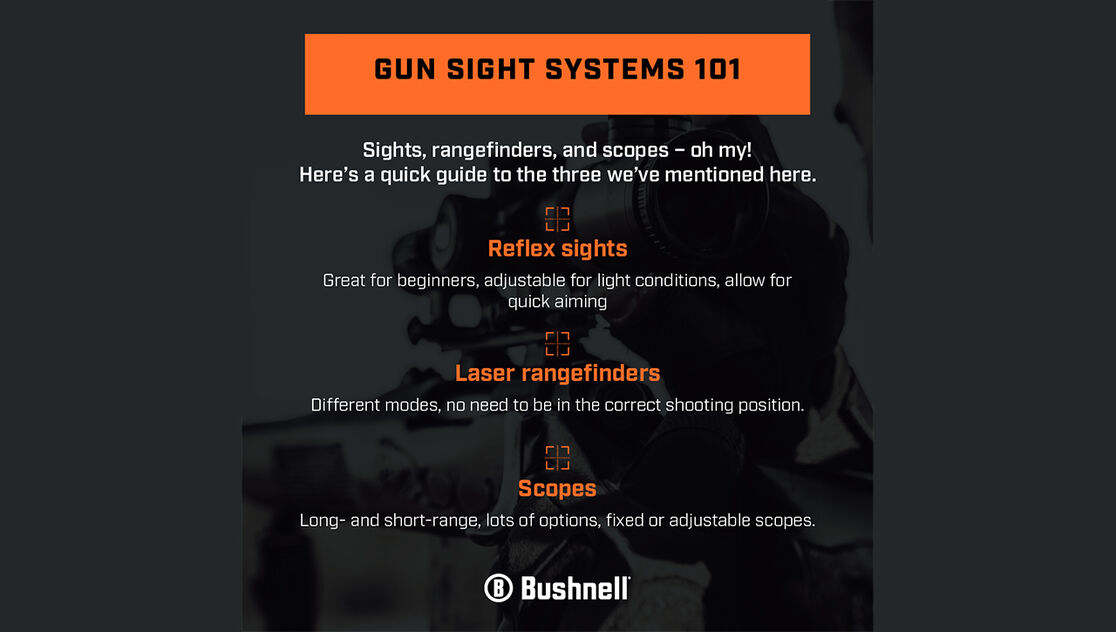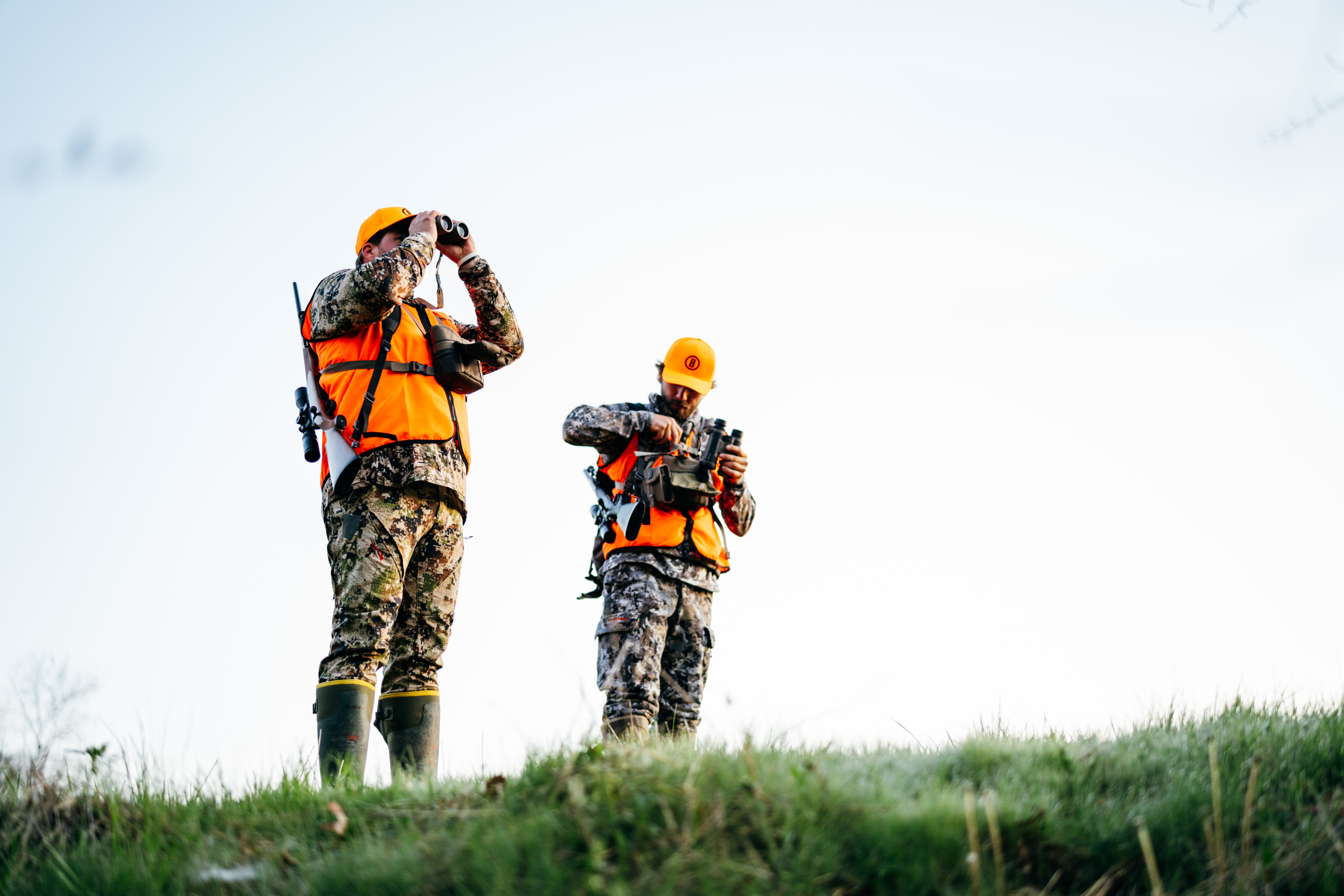So you’ve finally decided to “bite the bullet” and buy your first gun. Now it’s time to delve a bit deeper into your purchase.
For instance, did you know there was a reason for those little metal things on the top? Those are iron sights and they help you aim.
Iron sights are just one of several sight systems available. Are you limited to using an iron sight if that’s what your gun came with?
Nope!
Most guns actually come with iron sights. But some longer range guns need specialized sighting systems — like the 6.5 Creedmoor scope — based on the range.
We’ll take a look at all the sighting options below.
Iron Sights (Open and Peep)
There are two basic types of iron sights:
First, you have your open sight. These have a small bead or post in the front. The rear sight is a rectangular blade with an open notch in it.
Then there is the peep sight. This one still has a post/bead in front but the rear sight is a closed ring. You can use a peep on it’s own or add it to an open sight for a sharper focus.
With some practice, you can get a pretty accurate shot with either one of these.
Pros
- With practice, it can be very accurate.
- Inexpensive and already comes on most guns.
- Low maintenance.
- Lightweight.
Cons
- Takes longer to aim.
- Not as sophisticated as other systems.
- Harder to use when you do not have the best eyesight.
- Harder to adjust to lighting conditions.
Telescopic (Scope)
Are you looking to take longer range shots? Then you most likely need a scope.
I mean, I guess you could try to use an iron sight to shoot at a far away target. But I strongly recommend a scope if you actually want to hit something.
A scope is a mini telescope mounted onto your gun. Snipers and hunters use them a lot. Scopes make it way easier to hit targets that are far away or really small. You can also adjust them for different distances.
There are so many options with scopes. With all the different lens shapes, lengths and magnifications to choose from, you’ll probably end up with more than one.
Pros
- Great for long range shooting and small targets.
- You can get a fixed or adjustable scope. 2x - 24x magnification is most common.
- Lots of options.
- Ease of use.
Cons
- Takes longer to gain a target.
- Harder to track moving targets.
Red dot (reflex, holographic, prismatic)
Red dot systems project a red dot for you to aim with. These are what you want for close to moderate range shots. For example, I use a Bushnell TRS-25 red dot sight on my best .45 ACP carbine and I’m able to nail close-range targets.
Even though there are a bunch of different red dot systems, most of the ones you’ll come across are going to be reflex. A reflex uses an LED light to shine a red dot onto a lens.
But wait, there's more! There’s also holographic red dot systems and prism systems. Unfortunately, you can’t magnify anything with a reflex or holographic sight. Only the prismatics do that. And even then, it’s only 1x - 5x magnification.
You might not come away with more than one of these at once because they can get a bit pricey. Even so, they’re still worth checking out.
Pros
- Reticle (what you are using to aim with) is not visible from downrange. Whatever you are shooting at will not know it’s being targeted.
- Allows the shooter to aim very quickly.
- Ease of use. Good option for new shooters.
- Easily adjustable for light conditions.
Cons
- You will need to get closer to a prism sight for accuracy, because of the smaller eye relief.
- There are so many different types of red dot systems that it may take a bit more effort to find the right one for you.
- Can be more expensive than other systems.
- Won’t always have magnification.
Laser
Laser sights are a personal favorite of mine. Not only do they look really cool but they are the easiest to use and fastest to aim.
These systems use an actual laser to aim at the target! It’s basically that cool targeting device you’ve seen in every CIA spy movie ever. You can attach a laser sight to rifles, shotguns, pistols or revolvers.
There are two basic types. The ones that are separate attachments and the ones that already come built into the gun, such as the LaserMax Guide Rod Laser Sight.
Pros
- Easy to use. Can be really good for those still working on their aim.
- Speedy target acquisition.
- Some have different modes for the laser.
- You do not need to be in the correct shooting position to aim correctly. This makes it a great sight to have in situations where you might be taken by surprise.
Cons
- New shooters can become dependent on the laser. Don’t use it for target practice.
- Retical is visible from downrange. Whatever you are shooting at will see that it has been targeted.
- Can’t always adjust for bullet’s trajectory, sense lasers travels in a straight line and bullets do not.
- The laser is pretty small. It can be hard to see when shooting from far away or in conditions where there is too much direct sunlight.
Which Gun Sight Is Best For Me?
Here’s the super simple answer:
Shooting close range and don’t want to spend money on optics? Use an iron sight.
However, if you don’t mind spending a few dollars and would like to significantly improve your accuracy, go for a red dot.
Lastly, get a scope if you’re shooting at various distances (short-to-long range).
Author Bio:
Richard Douglas is a firearms expert and educator. His work has appeared on large publications like The National Interest, Daily Caller, American Shooting Journal, and more. In his free time, he reviews optics on his Scopes Field blog.

